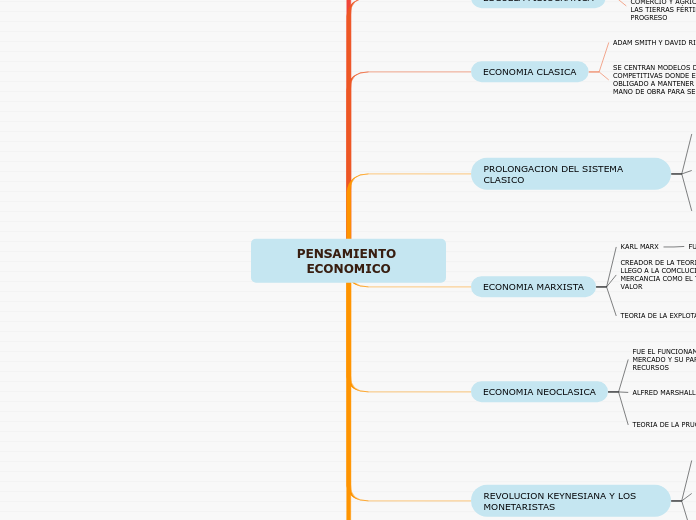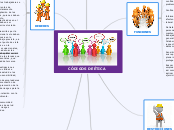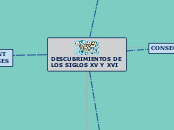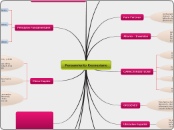PENSAMIENTO ECONOMICO
To name your story, you have to think about the overall message and what you want your audience to understand from the story. Also, make it relevant and easy to remember.
DESAROLLO RECIENTE DE LA TEORIA ECONOMICA
LA NUEVA MACROECONOMIA CLASICA
SE CENTRA EN REVALIDAR Y AMPLIAR LOS RESULTADOS DEL PLANTEAAMINETO MONETARIO
REVOLUCION KEYNESIANA Y LOS MONETARISTAS
EL PAPEL DEL ESTADO
LOS MONETARISTAS AFIRMAN QUE LAS AUTORIDADES ECONOMICAS SOLO DEBEN PROVEER A LA ECONOMIA DE UNA CANTIDAD DE DINERO Y QUE CREZCA A UNA TASA CONSTANTE
LA CONTRAREVOLCION MONETARIA
FIREDMAN SOSTIENE QUE LOS INDIVIDUOS AJUSTAN SU GASTO EN CONSUMO A SU RENTA A LAGO PLAZO Y NO COMO LA DEL CONSUNO Y LA INVERSION
KEYNES RECHAZO QUE EL ESTADO NORMAL DE LA ECONOMIA FUESE EL PLENO EMPLEO
ECONOMIA NEOCLASICA
TEORIA DE LA PRUCCION
MARSHALL ANUNCIA QUE LAS VENTAS DE LAS EMPRESAS ESTAN LIMITADAS AL MERCADO PARTICULAR LENTA Y COSTOSAMENTE ADQUIRIDO
ALFRED MARSHALL
HABLO DEL COMPORTAMIENTO DE LOS PRODUCTOS Y CONSUMIDORES ERA LA CLAVE PARA FIJAR PRECIOS
FUE EL FUNCIONAMIENTO DEL SISTEMA DEL MERCADO Y SU PAPEL COMO ASIGNADOR DE RECURSOS
ECONOMIA MARXISTA
TEORIA DE LA EXPLOTACION
CONSISTE EN QUE EL EMPRESARIO DEBEDE CONTRATAR A LOS TRABAJADORES POR TIEMPO COMPLETO Y NO POR TIENDO QUE DURE SU PRODUCCION
CREADOR DE LA TEORI DEL VALOR-TRABAJO MARX LLEGO A LA COMCLUCION QUE TANTO LA MERCANCIA COMO EL TRABAJO TIENEN EL MISMO VALOR
KARL MARX
FUNDADOR
PROLONGACION DEL SISTEMA CLASICO
JHON STUART MILL
SE DESTACO POR TRAER DE NUEVO LA LEY DE PRODUCCION Y DISTRIBUCION, DEJANDO CLARO QUE LA PRODUCION LA REGIA LA NATURALEZA Y LA TECNOLOGIA
THOMAS R. MALTHUS
HABLO SOBRE LA POBLACION A FUTURO Y LA SOBREPOBLACION, DEL ESTANCAMIENTO DE BIENES NO ESENCIALES, DE ESTIMULAR LOS GASTOS DEL ESTADO Y LOS RICOS
J.B.SAY
DESAROLLO UNA LEY DONDE NO HABRA NECESIDAD DE EL DINERO, SOLO INTERCAMBIO DE PRODUCTO
ECONOMIA CLASICA
The ending of a story is essential. We all know that if the ending is weak, what happened before loses its importance. So make it unpredictable, but fair. A resolved ending answers all the questions and ties up any loose threads from the plot.
SE CENTRAN MODELOS DE MERCADO MAS COMPETITIVAS DONDE EL EMPRESARIO SE VE OBLIGADO A MANTENER BAJOS COSTOS Y BUENA MANO DE OBRA PARA SER COMPETITIVOS
This is the closure section of the story.
See examples of possible outcomes below:
- all problems have been solved
- it's clear how each one of your characters ends up
- your main character is transformed by the challenge
TEORIA DE LA ACUMULACION
CONSISTE EN REINVERTIR LOS EXCEDENTES DE LAS RENTAS O GANANCIAS EN MQUINARIA PARA MEJORAR LA PRODUCCION Y MANO DE OBRA
TEORIA DEL VALOR
Try answering these questions in order for you to come up with a closure:
- Have all problems been solved?
- Is it clear what happens with all your characters in the story?
- Has the challenged transformed your main character?
- How do the characters feel in the end?
CONSISTE EN MANTENER UN PRECIO REGULAR AUN DEPENDIENDO DE UNA BUENA MANO DE OBRA
ADAM SMITH Y DAVID RICARDO
This is the moment when the main character surpasses the last obstacle and finally faces their greatest challenge.
The climax usually follows one of these patterns:
- realization
- resolution
- choice
Type in your answer.
PRINCIPALES REPRESENTANTES
ESCUELA FISIOCRATICA
The middle of the story is where you add layers of complications that will lead to the end. Reveal more about the character's journey. Did their personality go through changes? How did they overcome the challenges? And as you build up the story’s central conflict, make it more personal to that character. Also, from the middle act, you have to lead into the final act.
DEFENSORES DE DERECHOS DEL HOMBRE Y EL COMERCIO Y AGRICULTURA INTERNA, EXPLORAR LAS TIERRAS FÉRTILES PARA GENERRAR RIQUESA Y PROGRESO
Your character(s) need(s) motivation in order to solve the challenge(s).
F. QUESNAY
Each story has a main character and that character usually needs to solve a problem or challenge. The character's challenge is the one that creates tension throughout the story.
FUNDADOR Y PRINCIPAL REPRESENTANTE
In most stories, there are 3 challenges. The number 3 is a mystical number symbolizing completeness. Try to come up with interesting challenges with which your character needs to struggle.
See a few examples below:
- turns into a werewolf at night
- is sent back in time
LOS PRECLASICOS
In the beginning of the story (or the exposition), you will need to introduce the setting and characters. You might also want to introduce the main conflict. This part of the story is important because it gives the reader necessary background information and maybe even a first insight into a character’s personality.
EPOCA MERCANTILISTA
Characters are essential to a good story. Usually, the protagonist(s) is/are the most affected by the plot. Introduce a character by focusing on their actions, interests, and occupation, as the physical appearance doesn't make a difference in most cases.
SE CARACTERIZABA POR MANTENER UN EQUILIBRIO ECONÓMICO TANTO EN OFERTA Y DEMANDA SE CENTRABA EN EL COMERCIO INTERNACIONAL CON ORO Y PLATA
Type in the name of your character.










